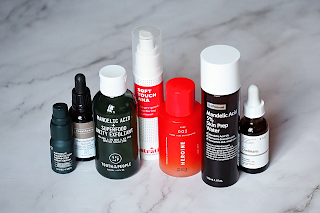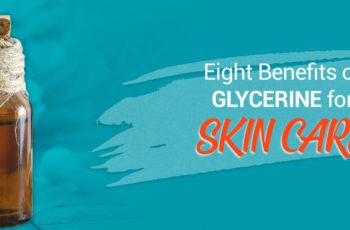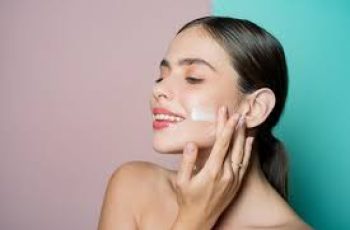
Can Retinol and AHA BHAs be mixed?
As you may already know, Retinol, AHAs, and BHAs are powerful skin ingredients that have been incorporated into our daily lives for years. However, it is not an easy task, especially when introducing something as powerful as Retinol into your daily life. However, our question is: Can Retinol be mixed with AHAs and BHAs? This can lead to possible drying side effects and irritation, but don’t panic because this is what we will cover in today’s blog and with any luck, we can alleviate your concerns about using these three powerful ingredients at the same time.
If you are wondering what exactly these ingredients do for your skin, you can check out our dedicated blog post with everything you need to know about them. So read on to find out more.
What is Retinol? How does it work on the skin?
What are AHAs and BHAs?
Now that you have brushed up on your knowledge of these clever formulas, let’s get started!
Can AHAs, BHAs, and Retinol be used together?
Yes or no, there is a lot of disagreement among skin care experts as to whether Retinol can be used with AHAs and BHAs. However, both sites recommend using these powerful ingredients in your daily skincare routine. It’s just a matter of figuring out how they fit together and finding the best time to use them.
The easiest way to incorporate these ingredients into your daily routine is to use a product rich in AHAs (like glycolic acid) or BHAs (like salicylic acid), such as an exfoliating toner. You can then use a retinol product at night. This allows enough time between uses to avoid irritation or imbalances in your skin’s pH, allowing your skin to regulate itself.
If you have a skin type that tends to get sensitive, you should be cautious with these powerful acids and retinols. This is because retinol and the most commonly used BHA (salicylic acid) need to be introduced slowly into your skincare routine. Start with weekly use and then slowly increase the frequency to every other night once your skin has developed the proper tolerance.
Can you use retinol and AHAs in the same week?
Yes, it is absolutely fine to use AHAs and retinols in the same week. Just make sure you use the products correctly. It is thought to be best to avoid using AHAs like glycolic acid in a layer with retinol. This is because the high potency and exfoliating properties of this acid strip the skin’s surface of important oils and moisture that it needs to stay healthy.
The protective skin barrier plays an important role in maintaining the overall appearance and health of your complexion. When the skin lacks the right amount of sebum (the natural oil on the surface) and water, its strength weakens, making it susceptible to skin damage caused by exposure to free radicals such as pollution, UV rays, and other environmental aggressors.
However, the benefits of AHAs and retinols for the skin also play an important role in maintaining a healthy complexion. Therefore, when using them on a daily basis, you need to find the most effective way to reap the benefits without irritating the skin. There are a variety of ways to do this, and here are some of the most popular examples.
Apply AHAs and retinols at different times of the day
This allows you to benefit from different skin effects without causing too much damage to the skin. Little do we know that an imbalanced skin pH is often the main cause of skin irritation. Using a product with AHAs in the morning and then using retinol in your evening skincare routine will give the skin enough time to rebalance the pH and fully absorb.
Alternate the use of each ingredient each week
Retinol is an ingredient that must be used at night, as exposure to UV rays causes it to lose its effectiveness and become unusable on the skin. You will also find that retinoids can only be applied to the skin 3-4 times per week. This gives you the option of using AHA products on days when you are not using retinol. This means that your skin benefits from these powerful products and avoids skin reactions or negative side effects.
As I mentioned before, your skin type will also determine whether these ingredients are safe to use. Therefore, always consult your doctor before applying a new formula to your face.
Can retinol and salicylic acid be used together?
The combination of retinol and salicylic acid often results in catastrophic drying of the skin. You need to give your skin enough time to build up tolerance when using them in your daily life. However, some skin care experts have expressed concerns about using salicylic acid and retinol at the same time. Using two extremely powerful ingredients at the same time is too much for the surface of the skin and weakens the protective barrier. This can lead to signs of aging on the skin, such as fine lines and wrinkles, loss of elasticity, and areas of hyperpigmentation.
Below are some examples of the best uses for salicylic acid and retinol.
Cleanse your skin with a gentle, non-foaming cleanser.
Soak a cotton pad with an exfoliating toner rich in salicylic acid and wipe it over your face, avoiding the eye area.
While your skin is still slightly damp, apply a serum rich in hyaluronic acid to lock in moisture and counteract the drying effects of salicylic acid and retinol.
Then apply your eye cream. Remember to apply with your ring finger to avoid pulling your skin.
Apply another serum or facial oil with retinol all over your skin, avoiding your eyes and mouth.
Use a rich moisturizer to bind extra nutrients into your skin.
Can you use BHAs in the morning?
Yes, you can, but many people believe that BHAs, such as B. salicylic acid, often increase the skin’s sensitivity to UV radiation, leading to skin damage. This is why many people use BHA-rich products at night, as this allows the ingredient to work on your skin undisturbed while you sleep. Don’t forget to apply a sunscreen of SPF 30 or higher every day afterwards to fully protect the skin’s surface from further skin damage.
Here’s more information on mixing retinol, AHAs, and BHAs. If you have any other skin care questions, don’t forget to follow us on Instagram. You can reach me via DM. See you there!


